Back and neck conditions can affect anyone and vary from person to person. In addition, symptoms related to these conditions can be confusing to identify. An overview of the most common symptoms and their possible causes can be helpful in understanding the source. Whether a sharp stab, persistent ache, or something in between, your symptoms may be better understood using this guide.
What are some general symptoms of a spinal condition?
General symptoms of a spinal condition vary, but often include back and/or neck pain. There are several different types of pain and positions or actions that can affect the pain. Other common symptoms include stiffness that limits mobility and pain that travels to other areas of the body like the arms or legs. Shooting pain into the buttock and down the leg is often referred to as sciatica. As these general symptoms progress, additional symptoms of numbness or tingling, muscle weakness, and lack of coordination or balance can occur. If you are experiencing severe or worsening symptoms, it is best to consult a healthcare professional for proper diagnosis and treatment.
Types of pain:
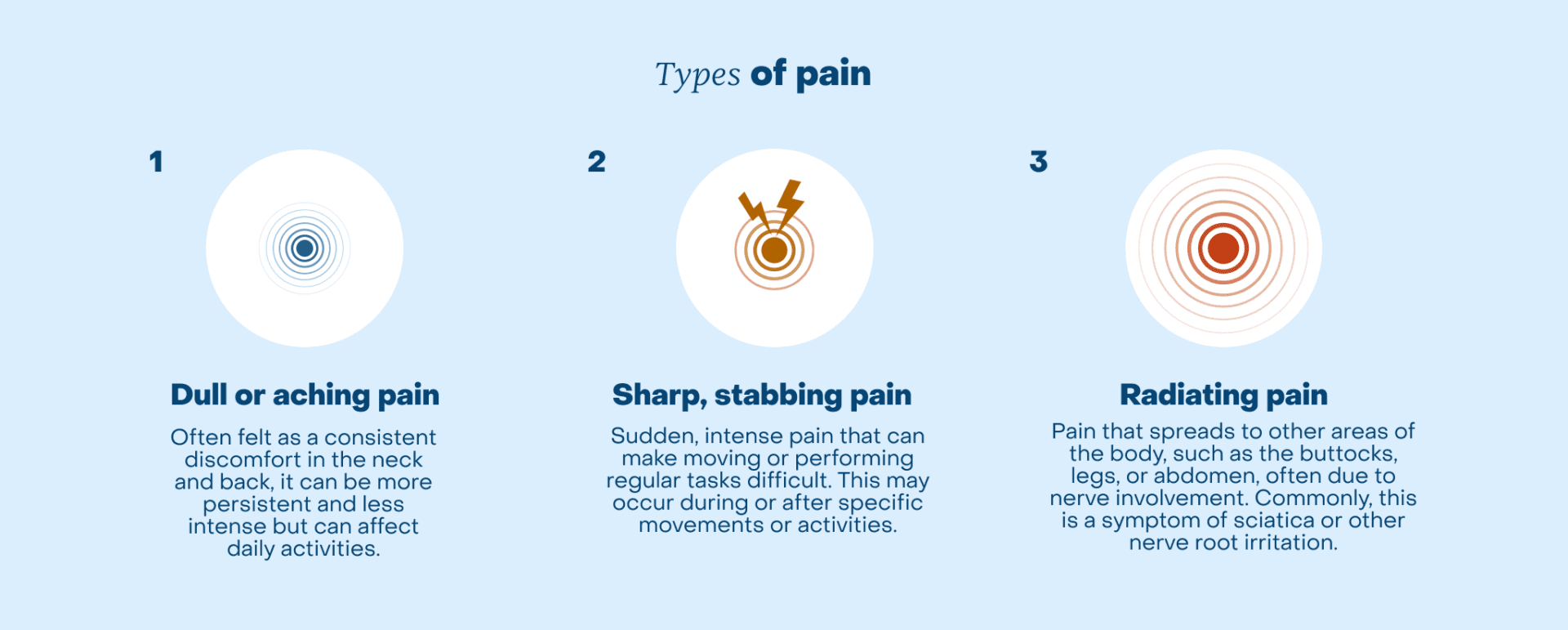
- Dull or aching pain: Often felt as a consistent discomfort in the neck and/or back, it can be more persistent and less intense but can affect daily activities.
- Sharp, stabbing pain: Sudden, intense pain that can make moving or performing regular tasks difficult. This may occur during or after specific movements or activities.
- Radiating pain: Pain that spreads to other areas of the body, such as the arm, buttocks, legs, or abdomen, is often due to nerve involvement. This type of pain comes from nerve root irritation.
Positions or actions that can affect pain:
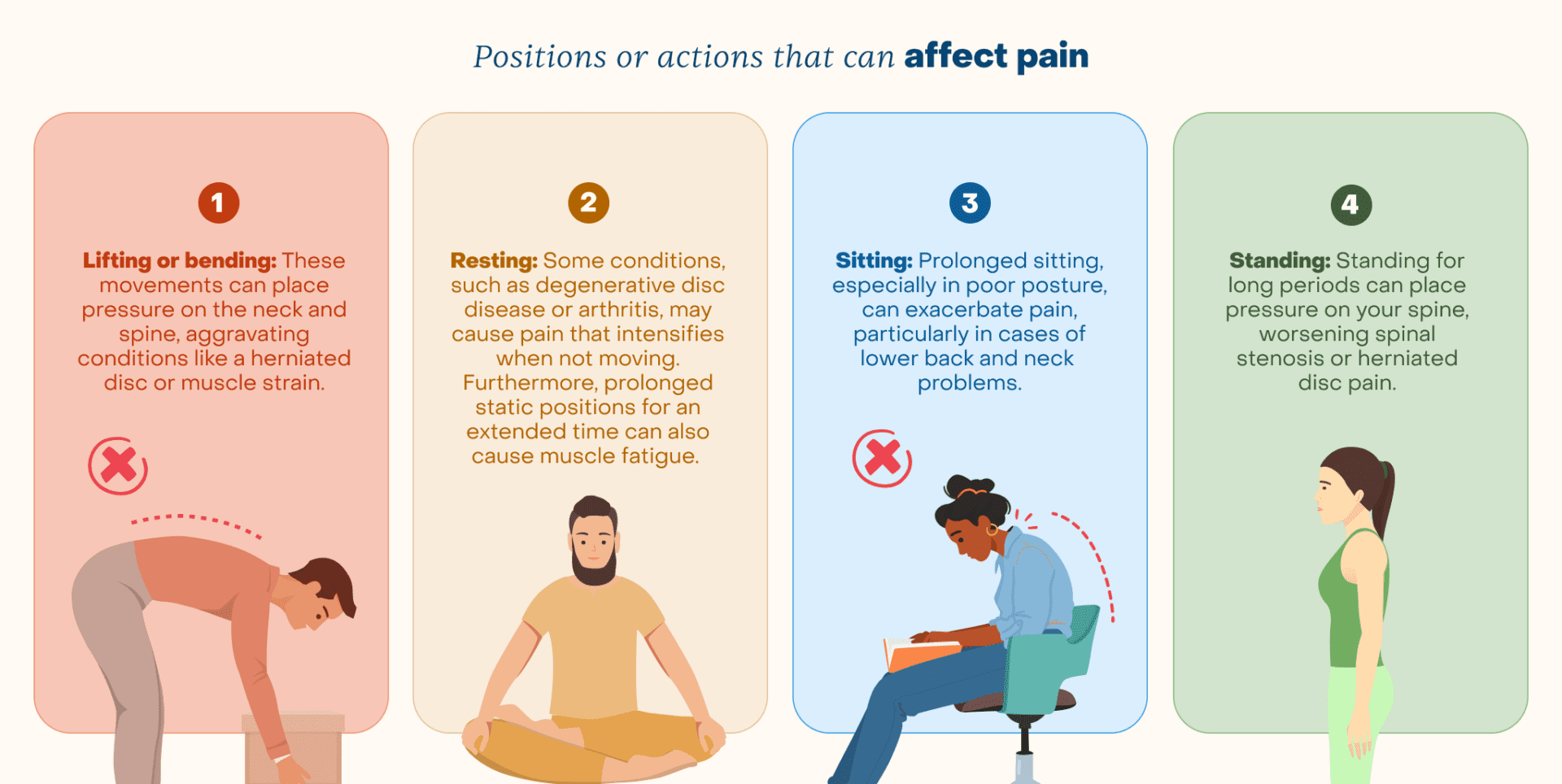
- Lifting or bending: These movements can place pressure on the neck and spine, aggravating conditions like a herniated disc, degenerative discs, or muscle strain.
- Resting: Degenerative conditions may cause pain that intensifies when not moving. Furthermore, prolonged static positions for an extended time can cause muscle weakness.
- Sitting: Prolonged sitting, especially with poor posture, can exacerbate pain associated with lower back and/or neck problems.
- Standing: Standing for long periods can increase spinal pressure, worsening conditions such as spinal stenosis or disc herniations.
Duration of pain:
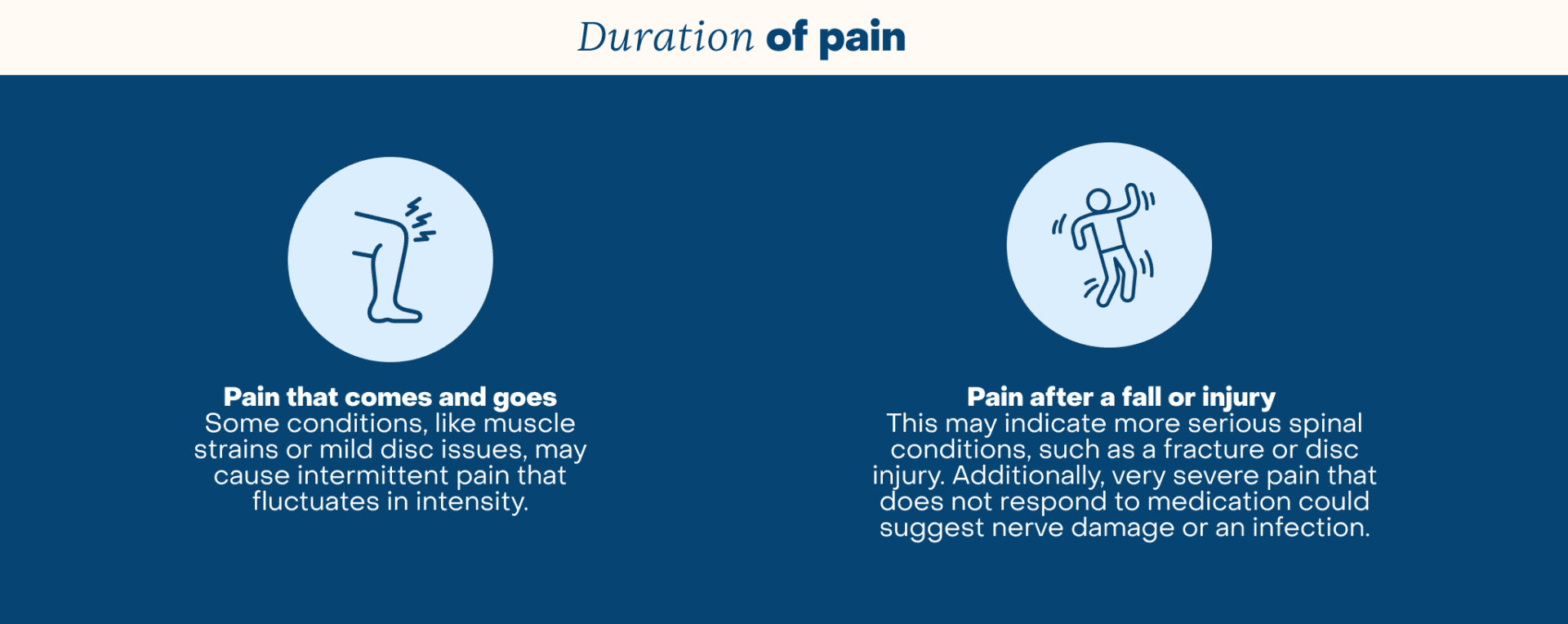
- Pain that comes and goes: Some conditions, like muscle strains or mild disc issues, may cause intermittent pain that fluctuates in intensity. Variability may be related to specific activities.
- Pain after a fall or injury: This may indicate more serious spinal conditions, such as a fracture or acute disc injury. Additionally, very severe pain that does not respond to medication could suggest instability, nerve damage, or an infection.
Stiffness:
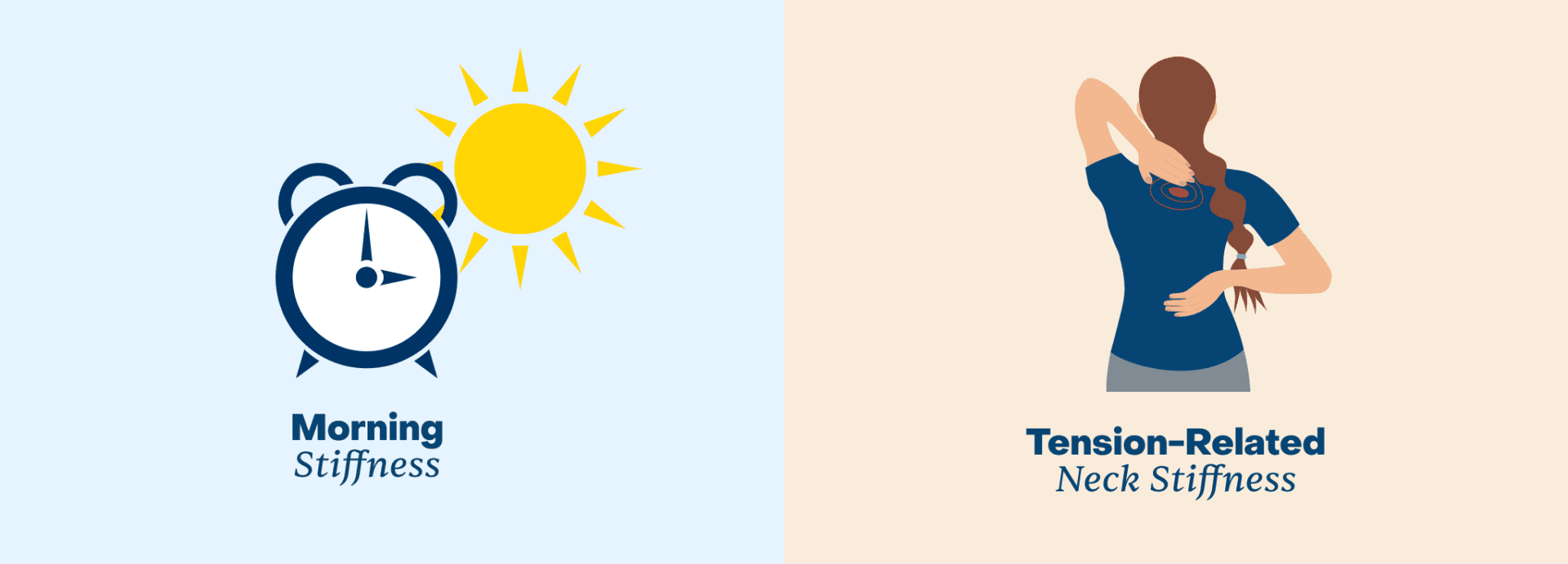
- Morning stiffness: Stiffness upon waking can be related to arthritis, facet syndrome, and degenerative disc disease, where the back feels tight and challenging to move. Stretching and movement often alleviate discomfort as blood flow increases and the spine becomes more mobile throughout the day.
- Tension-related neck stiffness: Neck tension is often caused by stress or muscle tightness around the neck and shoulders. These symptoms can also be accompanied by headaches or discomfort in the upper back area.
Symptoms related to nerves, muscles, and joints:
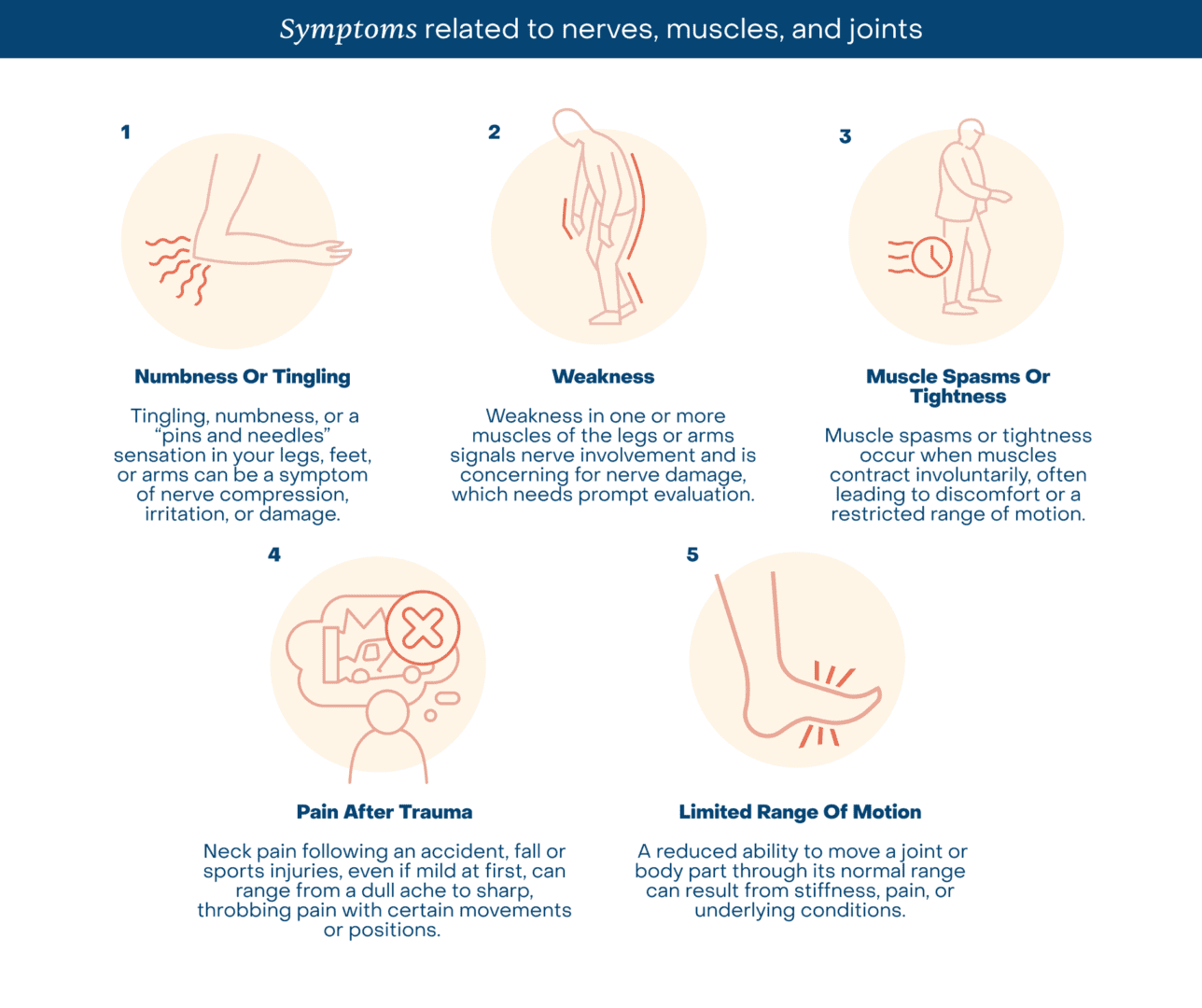
- Numbness or Tingling: Tingling, numbness, or a “pins and needles” sensation in your legs, feet, or arms can be symptoms of nerve compression, irritation, or damage. These types of nerve symptoms could indicate conditions like disc herniation or spinal stenosis.
- Weakness: Weakness in one or more muscles of the legs or arms signals nerve involvement and is concerning for nerve damage, which needs prompt evaluation. Weakness can be subtle and only noticeable with strenuous activities, such as pushups. Alternatively, weakness can be profound, causing obvious issues simply with walking.
- Muscle Spasms or Tightness: Muscle spasms or tightness occur when muscles contract involuntarily, often leading to discomfort or a restricted range of motion. In the absence of direct muscular injury, spasms are often secondary symptoms of an underlying spinal condition.
- Pain after trauma: Neck and/or lower back pain following an accident, fall or sports injury, can range from a dull ache to sharp, throbbing pain with certain movements or positions.
- Limited range of motion: A reduced ability to move a joint or body part through its normal range of motion can result from stiffness, pain, or underlying conditions. Spinal conditions such as spinal instability, disc problems, facet syndrome, muscle strain, or arthritis, can decrease flexibility and mobility.
When should you see a doctor for back or neck pain?
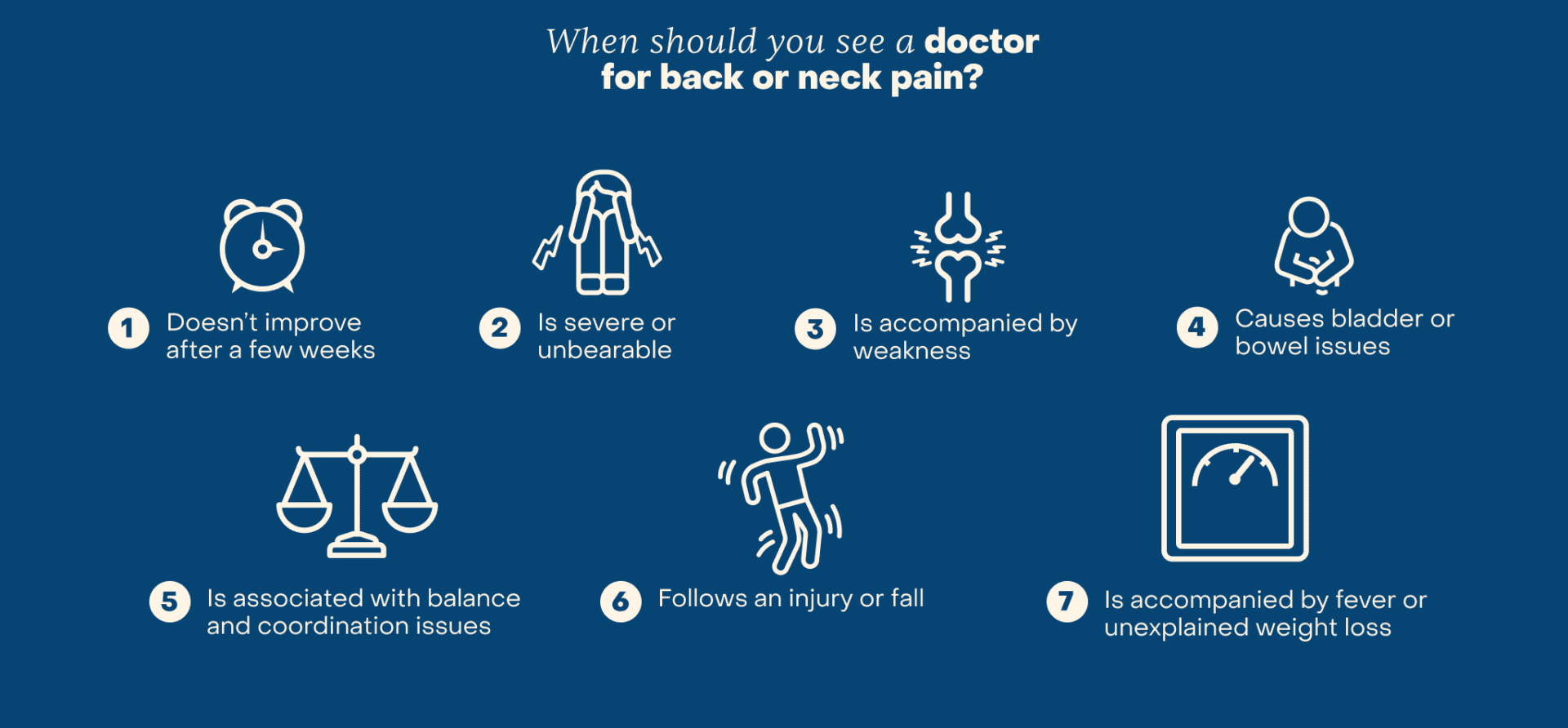
Pain can improve over time with rest, proper posture, and self-care. However, you should see a doctor if your pain:
- Doesn’t improve after a few weeks: Persistent pain that doesn’t improve with rest or over-the-counter medications may indicate a more severe condition or one that needs targeted treatment to resolve.
- Is severe or unbearable: Intense, unrelenting pain that does not subside with treatment may require urgent evaluation.
- Is accompanied by weakness: If you experience muscle weakness or difficulty moving parts of your body, this could be a symptom of nerve compression or damage that requires medical attention.
- Causes bladder or bowel issues: Sudden loss of bladder or bowel control is a severe warning sign, potentially indicating cauda equina syndrome, which requires immediate medical intervention.
- Is associated with balance and coordination issues: Worsening ability to perform fine motor skills, maintain balance, and complete tasks that require coordination may be symptoms of spinal cord compression and require immediate evaluation.
- Follows an injury or fall: If you’ve recently had a fall or traumatic injury, seeking medical attention is important to rule out fractures or other severe conditions.
- Is accompanied by fever or unexplained weight loss: This could indicate an infection or a more severe underlying health issue affecting the spine, such as a spinal tumor or infection.
You can get an accurate diagnosis and begin the proper treatment to manage your pain and avoid long-term complications by consulting with a doctor early. The longer the pain persists, the greater the risk of being more difficult to resolve.
From persistent pain and stiffness to numbness and limited mobility, recognizing the symptoms of a spinal condition can help you understand when back and/or neck pain might be a signal of underlying problems that may need medical attention. While many forms of pain improve with rest and self-care, severe or lingering pain, weakness, and other serious symptoms shouldn’t be ignored. To get better clarity on your condition, seek the opinion of a spine specialist to prevent potential future complications, allowing you to move forward with better spinal health and quality of life.
Disclaimer: NSHF is not able to diagnose health conditions. Seek immediate medical attention if acute symptoms persist.



